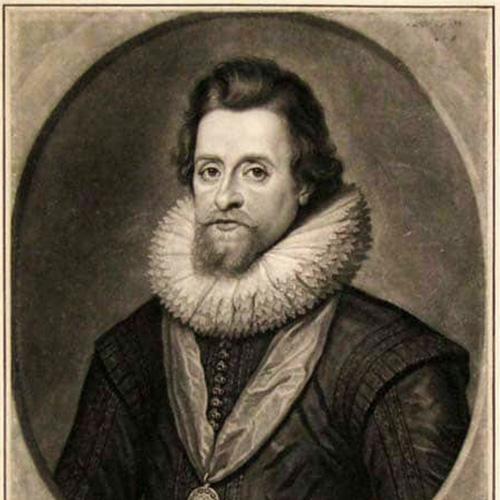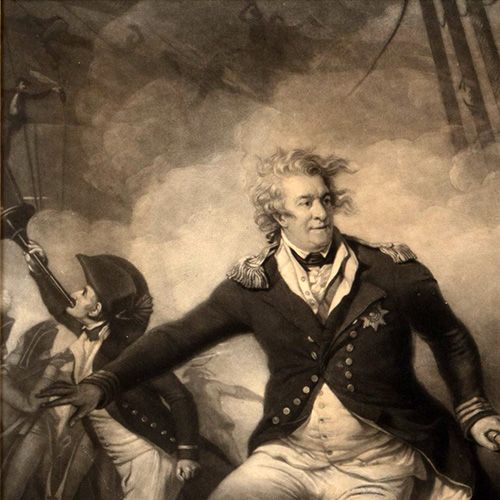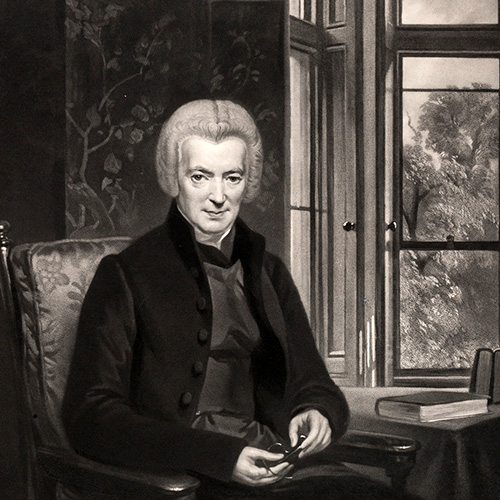

Invented in 1641 by the German soldier and amateur printmaker Ludwig von Siegen, mezzotint is a monochrome printmaking technique that allows the maker to create subtle mid-tones between black and white. The term itself derives from the Italian ‘mezzo-tinto’, meaning half-tone or half-painted.
Prior to its invention, artists had used cross-hatching or dot-based techniques to create the effect of tone and shade. Von Siegen’s revolutionary method deployed a sharp metal tool known as a ‘rocker’ to make indentations directly on the printing plate. These pits are then rubbed down or burnished to create contrasting areas of rough and smooth texture across the plate.
The resulting pits would retain ink and when pressed onto paper would show a darker or lighter tone depending on the depth of the indent. The result is a rich, luxurious, high-quality print with far greater definition and detail than had been thought possible at the time.
A convert to Catholicism, despite his service in the strictly Calvinistic court of William VI, Landgrave of Hesse-Kassel, Ludwig von Siegen chose exile in Amsterdam in 1641. It is thought that during his time in the city his mezzotint effect was influenced by the tonal aspects of Rembrandt’s fashionable etchings.
 Whilst in Amsterdam, von Siegen began producing works for his former patrons, with his first mezzotint being a portrait of Landgravine Amalia Elisabeth, Regent of Hesse-Kassel in August 1642. Over the next 15 years he would produce portraits of Elizabeth of Bohemia, William II of Orange and Ferdinand III, Holy Roman Emperor. However, he is only known to have produced seven mezzotint plates in total.
Whilst in Amsterdam, von Siegen began producing works for his former patrons, with his first mezzotint being a portrait of Landgravine Amalia Elisabeth, Regent of Hesse-Kassel in August 1642. Over the next 15 years he would produce portraits of Elizabeth of Bohemia, William II of Orange and Ferdinand III, Holy Roman Emperor. However, he is only known to have produced seven mezzotint plates in total.
The technique was introduced to England in 1660 by Prince Rupert of the Rhine, an English Civil War commander and cousin of von Siegen’s patron William VI of Hesse-Kassel. A gifted printer himself, Prince Rupert demonstrated mezzotint to the diarist John Evelyn, who erroneously credited Rupert with its invention.
An early adopter of the technique was Sir Peter Lely, Principal Painter in Ordinary to Charles II, who realised the commercial benefits of reproducing his portraits in mezzotint for a wider audience. Lely encouraged Dutch printmakers to come to London and replicate his works, spawning a movement that would soon make London the centre of Europe’s burgeoning mezzotint market.
The trend for British mezzotint collecting was at its peak from around 1760 until the mid-20th century. Popular themes included the works of Joshua Reynolds, still life paintings, portraits of historical figures, and popular oil paintings from the Royal Academy Summer Exhibition.
 With sizes and costs to suit all budgets, the popular new art form could be displayed in a variety of ways, from large portfolio or album collections to wall mounted “furniture” prints, or simply pasted directly onto an interior wall.
With sizes and costs to suit all budgets, the popular new art form could be displayed in a variety of ways, from large portfolio or album collections to wall mounted “furniture” prints, or simply pasted directly onto an interior wall.
Prints were produced in four standard sizes: Royal, measuring 24 x 19 inches, Large, 18 x 24 inches, Posture, 14 x 10 inches, and Small, 6 x 4 inches. It goes without saying that any print seller worth their salt would also stock a range of frames and albums designed specifically to fit each size.
Quality was also an essential consideration for any serious collector. Over repeated use, the pressure of the printing press will smooth out the indentations required to create the darkest tones. Consequently, the earliest pressings produce the sharpest results.
Click here to view a selection of mezzotints currently available form BADA members.

